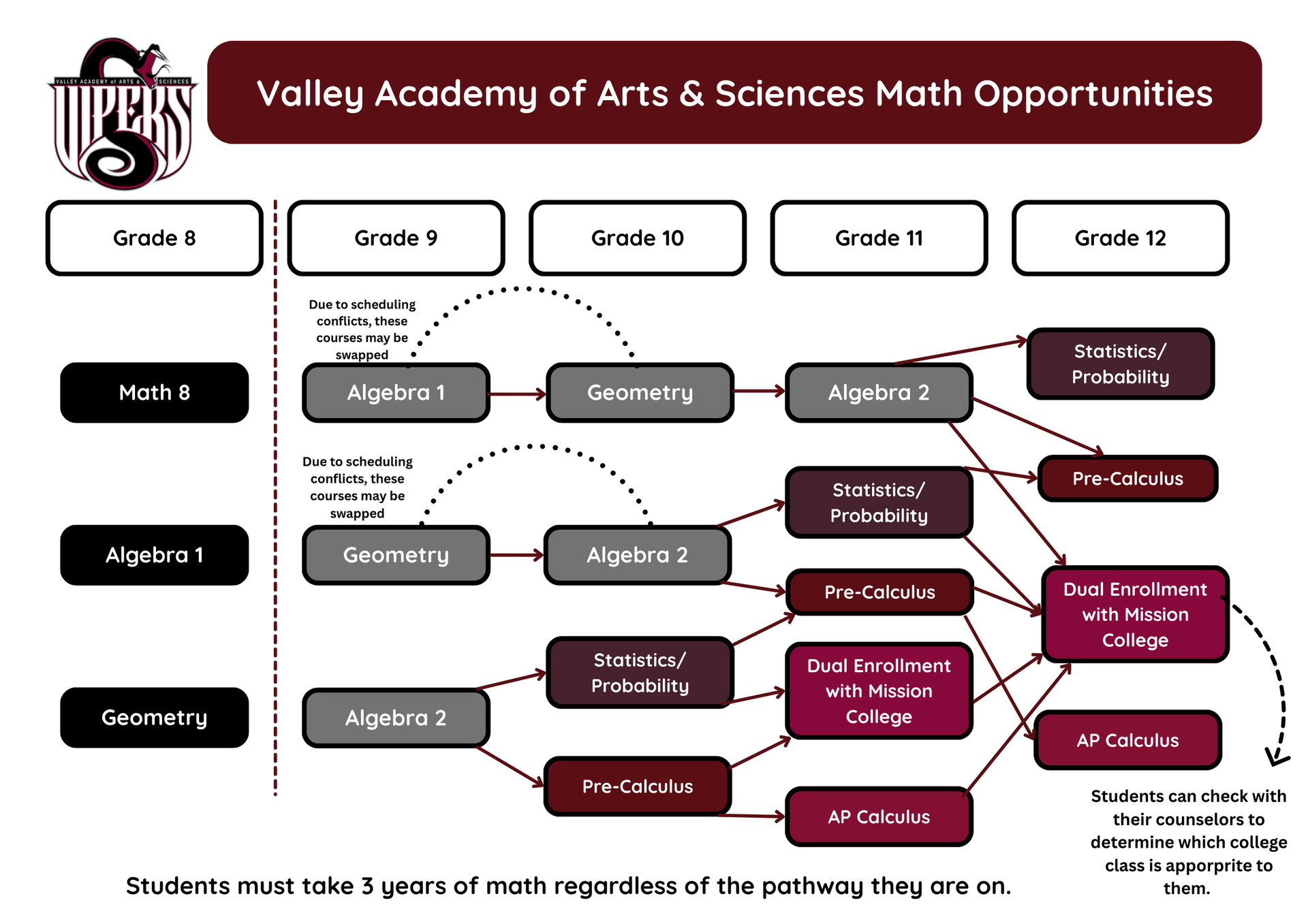Welcome to the VAAS Math Department
In keeping with our VAAS Mission statement, Valley Academy of Arts and Sciences provides a personalized, safe learning environment that encourages all students to be mathematical thinkers and valuable contributors to the mathematical learning processes. At VAAS, students engage in mathematical content both independently and collaboratively, using the standards for mathematical practices, rich classroom discussions, persevering in solving problems, and participating in project-based learning tasks. Not only will this learning transfer into other content areas, but it will also prepare our students with the critical thinking and problem-solving capabilities needed for future academic pursuits and success in our global society.
Our Math Curriculum
Algebra 1, Geometry, and Algebra 2 utilize the Illustrative Mathematics curriculum.
IM Algebra 1, Geometry, and  2 are problem-based core curricula rooted in content and practice standards to foster learning and achievement for all. Students learn by doing math, solving problems in mathematical and real-world contexts, and constructing arguments using precise language. Teachers can shift their instruction and facilitate student learning with high-leverage routines that guide them in understanding and making connections between concepts and procedures.
2 are problem-based core curricula rooted in content and practice standards to foster learning and achievement for all. Students learn by doing math, solving problems in mathematical and real-world contexts, and constructing arguments using precise language. Teachers can shift their instruction and facilitate student learning with high-leverage routines that guide them in understanding and making connections between concepts and procedures.
 2 are problem-based core curricula rooted in content and practice standards to foster learning and achievement for all. Students learn by doing math, solving problems in mathematical and real-world contexts, and constructing arguments using precise language. Teachers can shift their instruction and facilitate student learning with high-leverage routines that guide them in understanding and making connections between concepts and procedures.
2 are problem-based core curricula rooted in content and practice standards to foster learning and achievement for all. Students learn by doing math, solving problems in mathematical and real-world contexts, and constructing arguments using precise language. Teachers can shift their instruction and facilitate student learning with high-leverage routines that guide them in understanding and making connections between concepts and procedures.Statistics
Statistics and Probability offer students an alternative to Precalculus as a fourth high school mathematics course. In the Statistics and Probability course, students continue to develop a more formal and precise understanding of statistical inference, which requires a deeper understanding of probability. Students learn that formal inference procedures are designed for studies in which the sampling or assignment of treatments was random, and these procedures may be less applicable to non-randomized observational studies. Probability is still viewed as long-run relative frequency, but the emphasis now shifts to conditional probability and independence, and basic rules for calculating probabilities of compound events
Pre-Calculus-
Precalculus combines concepts of trigonometry, geometry, and algebra that are needed to prepare students for the study of calculus. The course strengthens students’ conceptual understanding of problems and mathematical reasoning in solving problems. Facility with these topics is especially important for students who intend to study calculus, physics, other sciences, and engineering in college. The main topics in the Precalculus course are complex numbers, rational functions, trigonometric functions and their inverses, inverse functions, vectors and matrices, and parametric and polar curves
AP Calculus-
AP Calculus AB and AP Calculus BC focus on students’ understanding of calculus concepts and provide experience with methods and applications. Although computational competence is an important outcome, the main emphasis is on a multi-representational approach to calculus, with concepts, results, and problems being expressed graphically, numerically, analytically, and verbally. The connections among these representations are important.
Students learn through engagement in collaborative learning, problem-solving, modeling, application, and critical thinking.

